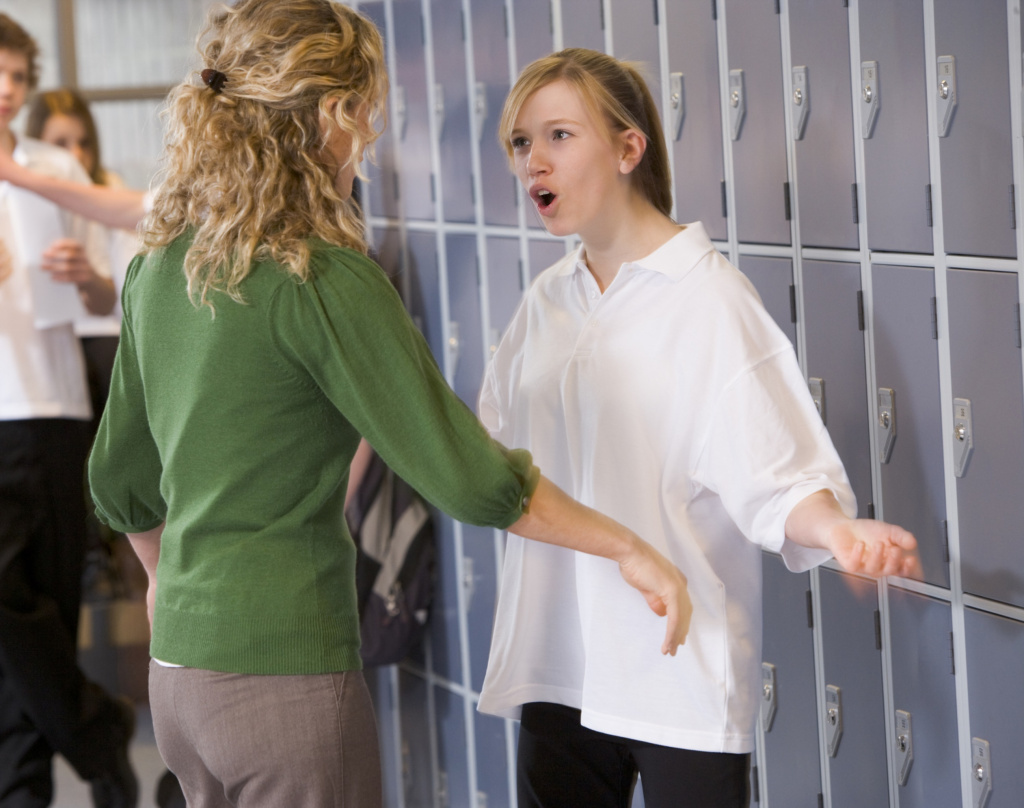
While working in school improvement and deployed to a pupil referral unit (PRU) to develop behaviour and attendance, I became aware that the cohort of students comprised almost 50 per cent girls in 2013 to 2014, which is atypical of national data.1 I saw the study of the Key Stage 3 (KS3) and 4 girls as an opportunity to engage with a group of learners.
I wanted to unpick their stories and develop a holistic understanding of students’ experience of school exclusion. In addition, I would consider the perspectives of their parents and key staff, one that was grounded in personal accounts and interpretations. This would, in turn, inform my own practice and professional development to help mainstream schools refine their policies for learning behaviours and inclusion.
A total of 11 students were interviewed, ten in the PRU and one at her home. While interviews have been discussed and referred to as ‘one to one’, in practice, students were offered the option of having another adult present. Nine girls expressed a preference for their mentor to stay with them and at another interview, the head joined us, purely because the interview was taking place in her office. While it was envisaged the interviews would last 15 to 20 minutes, many students were keen to continue and this timescale was used as a very general guideline.
The school experience deteriorates...
A common experience shared by some of the girls in the study was an escalating number of fixed term exclusions, culminating in a permanent exclusion in Year 9. Aggressive behaviours, such as physical fights with other girls or bullying behaviours, were described with, at times, a candid acceptance of their role in exacerbating a situation.
Other students described a frustration of being permanently excluded for what they deemed as a relatively minor misdemeanour. Only one girl had attended a PRU previously for a refocusing programme. However, for most of the girls, alternative provision had been accessed before, frequently resulting in part-time education away from the main school site. Periods of non-attendance were common.
Managed moves had been initiated in some circumstances, although integration had not been successful. There was a sense of exclusion particularly voiced by girls of Gypsy, Roma and Traveller (GRT) heritage, and many girls generally in the study were unable to describe a significant adult in school who could offer support.
What emerged from the interviews were underlying medical issues and difficulties accessing an appropriate curriculum. Significant too was their perception of lack of equality—in effect that girls were treated with more leniency within the school system. In evaluating the girls’ interviews, the research of Ellis and Tod seems particularly apposite.2 They describe learning behaviours as relationships with self, with others and with the curriculum. Transitions, they argue, ‘make intense demands on the three behaviour for learning relationships’, and some pupils are more vulnerable than others at this time.
The girls in the study would broadly reflect a deterioration in their relationship with others, such as their peers and teachers; with the curriculum as they struggled with skills needed to cope with increased demands; and particularly with their own feelings and abilities, their relationship with self, to manage secondary education.
Ofsted reports a deterioration in behaviour in KS3.3 Ellis and Tod concur that by Year 8, the ‘excitement of secondary school has diminished…and their relationship with the curriculum begins to suffer’.4
The girls in this study echo a national trend in exclusions at KS3 but represent a significant, under reported group. As Ellis and Tod describe, KS3 ‘casualties’ need to be minimised, as anti-work identities, once established, are difficult to change.

A situation unique to girls?
It was also evident from the study that levels of absenteeism were often high among the cohort of girls and this may, as Osler and Vincent assert, ‘reflect difficulties coping with the structure, organisation and management of mainstream schools’.5 This was in contrast to the positive experiences described by students attending the PRU and a recognition of the less formal relationships with staff, smaller class sizes and friendliness amongst peers.
Pomeroy’s study also recognises that centres like the PRU offer, ‘more relaxed and personal discipline; positive or at least neutral relations with peers’.6 While for some students, a reduced timetable may have been preferable than being excluded, Evans notes: ‘…given that these young people are likely to be poor attenders anyway, schools using unofficial exclusions are effectively colluding with a tendency to truant.’7

This could have potential issues regarding safeguarding and meeting the statutory legal requirement of 21 hours of education per week, with parents unaware of their rights to be involved in decision making. This study shows girls using withdrawal or self-exclusion from school as a coping strategy, confirming Reid’s conclusion that official statistics underestimate actual levels of non-attendance, particularly in girls.8
Some of the students have a clear story that they presented, which no doubt forms their reality or their interpretation of their reasons for their exclusion. The general consensus from the students was that they were responsible themselves for being excluded and arriving at the PRU. Their accounts are similar to Lloyd’s findings that: ‘Accounts by girls of getting into trouble at school often refer to persistent everyday misbehaviour rather than dramatic episodes of conflict.’9
This may be described as persistent, low-level disruption, highlighted in a recent government report.10 As Lloyd indicates, ‘girls’ difficulties may be less visible and therefore overlooked by the more overt and challenging problems shown by their male peers’.
What may be contentious is that staff have responded to secondary behaviours, and the underlying causes have not been explored until a placement at the PRU. As the data has shown, using Ellis and Tod’s model of learning behaviours11, there has been a breakdown predominantly in relationship with self. Girls have presented with unmet learning needs and in some cases, medical issues. Difficulties maintaining a relationship with a key member of staff in mainstream school and with their peers has further undermined their sense of worth and esteem.
Recommendations for practice
- Provide a key worker or mentor to girls showing early signs of disaffection.
- Engage girls in single-sex student voice and consultation initiatives.
- Consider single-sex nurture groups to develop self-esteem, healthy eating, healthy relationships and making informed choices.
- Provision map curricula and programmes of alternative providers to avoid potential gender bias.
- Construct multi-agency support teams to provide holistic support to vulnerable learners and to include family support where appropriate.
- LA to maintain a key strategic role in its monitoring and placement of excluded learners.
- Development and accreditation for practitioners who specialise in behaviour at a local and national level.
Relationships are key
While national data has shown a general decrease in both permanent and fixed term exclusions from school, boys are still over represented in data. However, research has tended to focus on boys’ behaviour and raising attainment at the expense of the needs of girls.
The case study used semi-structured interviews with 11 girls, two parents and key professionals. Findings were triangulated against current literature and data. While each girl presented a unique and often complex pathway leading to their exclusion, some common features emerged. The protective or destructive power of relationships with other females developed as a significant factor in the lives of the girls, particularly influencing their learning behaviours and attitude to self as a learner.
The outcome of this study is to offer recommendations for inclusionary practice in the context of schools and within Local Authorities. Foremost is the need to engage girls in student voice, to listen to their concerns and within an emotionally literate environment, for girls to be able to turn to a trusted adult in school. Suggestions for wider research are considered within the context of a social, moral and financial imperative to support our most vulnerable learners within mainstream education.
Edwina Chevens (MA) is an education adviser currently working in academies to close the gap for pupil premium students. She is a visiting lecturer for Initial Teacher Training and contributes to various academic journals.
References
- Department for Education (2016). Permanent and fixed-period exclusions in England: 2014 to 2015. [online] Available at: gov.uk/government/statistics/permanent-and-fixed-period-exclusions-in-england-2014-to-2015 [Accessed 11 October 2016].
- Ellis, S. and Tod, J. (2009). Behaviour for learning: Proactive approaches to behaviour management. London: Routledge.
- Ofsted (2005). Managing challenging behaviour. [pdf] Available at: dera.ioe.ac.uk/5269/7/Managing%20challenging%20behaviour%20(PDF%20format)_Redacted.pdf [Accessed 11 October 2016].
- Ellis, S. and Tod, J. (2009). Op cit.
- Osler, A. and Vincent, K. (2003) Girls and exclusion: Rethinking the agenda. Abingdon: Taylor & Francis.
- Pomeroy, E. (2000) Experiencing exclusion. Stoke-on-Trent: Trentham Books Ltd.
- Evans, J. (2010) Not present and not correct: Understanding and preventing school exclusions. [online] Available at: barnardos.org.uk/resources/research_and_publications/not-present-and-not-correct-understanding-and-preventing-school-exclusions/publication-view.jsp?pid=PUB-1426 [Accessed 11 October 2016].
- Reid, K. (1999) Truancy and schools. London: Routledge.
- Lloyd, G. (2013) Problem girls: Understanding and supporting troubled and troublesome girls and young women. London: Routledge.
- Ofsted (2014) Low-level disruption in classrooms: below the radar. [online] Available at: gov.uk/government/publications/below-the-radar-low-level-disruption-in-the-countrys-classrooms [Accessed 11 October 2016].
- Ellis, S. and Tod, J. (2009). Op cit.